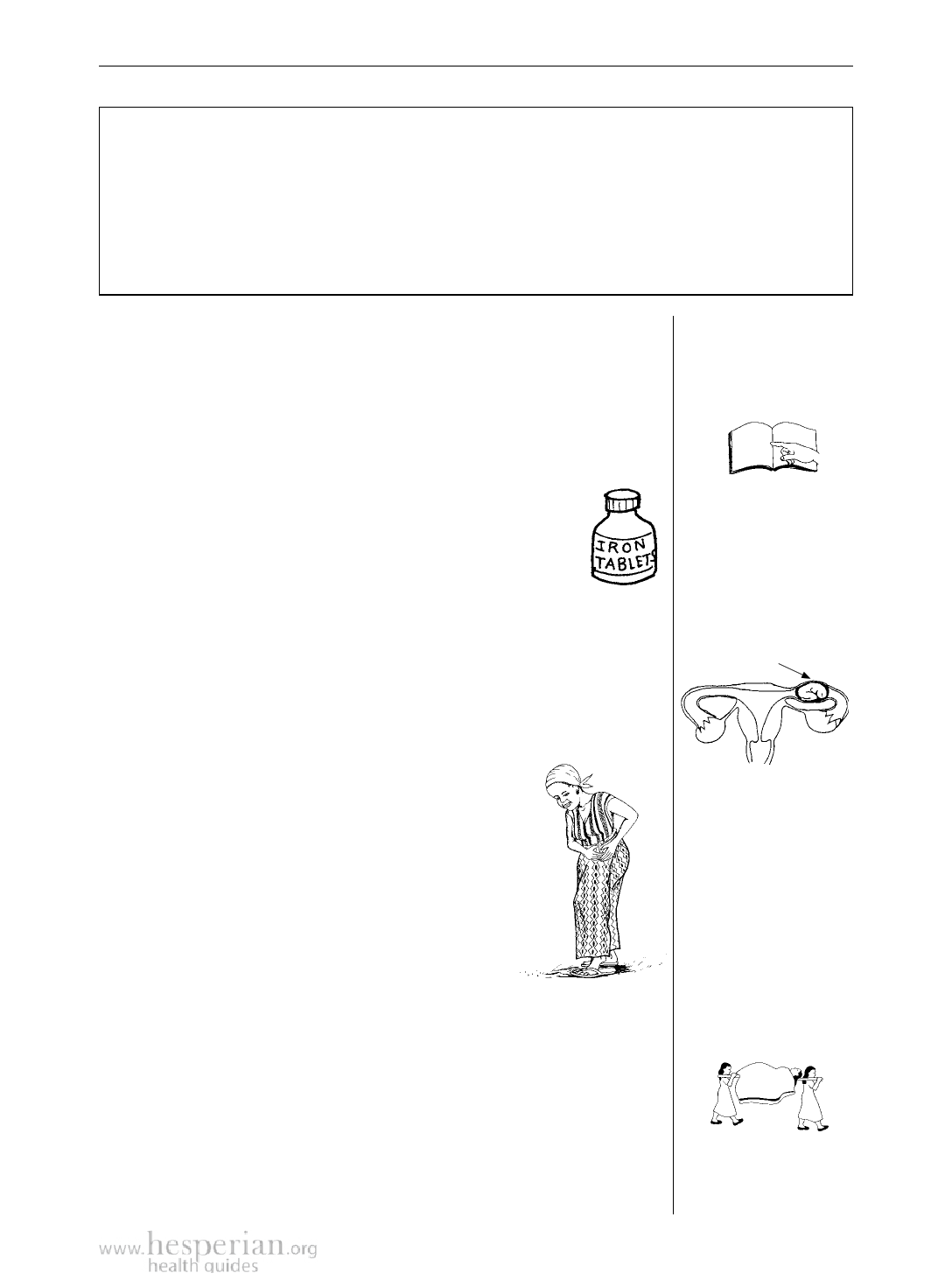
Risks and Danger Signs during Pregnancy 73
Danger signs during pregnancy
In addition to the problems just listed, these danger signs may occur during
pregnancy. A woman with any of these signs may be in serious danger and should
see a health worker. See the next few pages for more about them.
• feeling very weak
• bleeding from
• swelling of hands and face,
or tired
the vagina
or bad headache and blurred
• pain in the belly
• fever
eyesight
Feeling very weak or tired (anemia)
If you feel very weak or tired, you could be anemic
(see page 172). Women who are very anemic are much
more likely to have heavy bleeding after the baby is born.
What to do:
• Eat foods rich in iron—meat, fish, chicken, eggs, beans, peas,
and leafy green vegetables.
• Take 325 mg of iron 2 times a day, and 1mg of folic
acid once a day, until the baby is born. If you take
iron tablets with fruits like oranges, mangoes, or
papayas, your body uses the iron better.
167
foods rich in iron
Pain in the lower belly (abdomen)
1. Strong, constant pain in the first 3 months may be caused
by a pregnancy that is growing outside the womb in the tube
(a tubal pregnancy). As the tube stretches, it causes pain. If
the pregnancy grows large enough, the tube will burst and
bleed. This is very dangerous. You will bleed inside your
abdomen and may die.
Signs of tubal pregnancy (ectopic pregnancy):
• missed monthly bleeding, and
• pain in the lower abdomen on one side, or
• slight bleeding from the vagina, or
• feeling dizzy, weak, or faint
What to do:
Go to the nearest hospital.
2. Strong pain that comes and goes (cramping) in the first
6 months could mean you are losing the pregnancy (having
a miscarriage). See page 234.
3. Strong, constant pain in late pregnancy. This could mean
the afterbirth (placenta) is coming off the wall of the womb.
This is very dangerous. You could die if you do not get
help. Go to the nearest hospital.
4. Pain that comes and goes in the 7th or 8th month could
mean you are going into labor too early (see page 75).
tubal pregnancy
➤ Strong pain in
the abdomen does
not always mean
something is wrong
with a pregnancy. For
information about
other possible causes,
see pages 353 to
357.
TRANSPORT!
Where Women Have No Doctor 2012